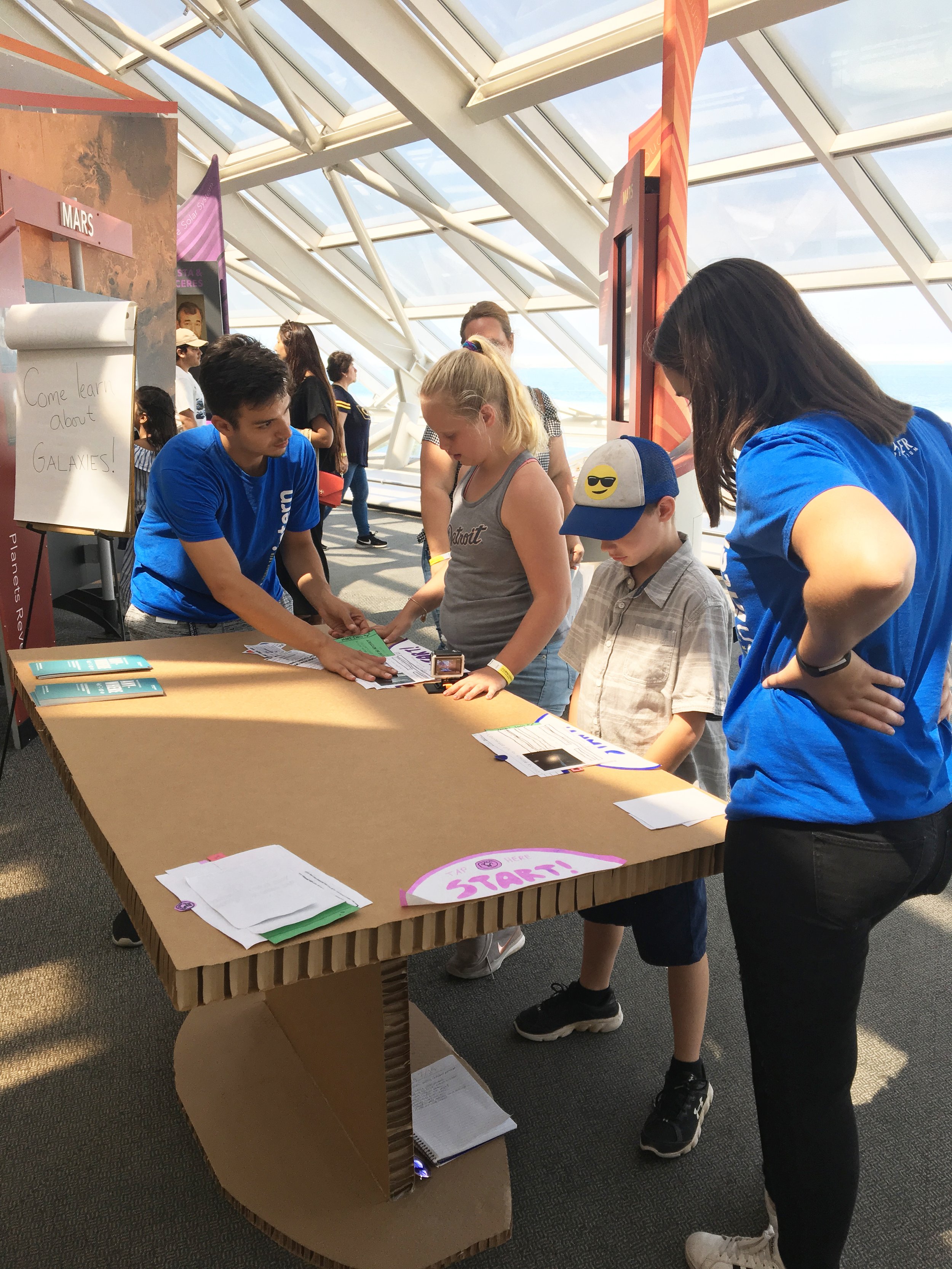Exploring the universe, one galaxy at a time
Thanks to a grant from the National Science Foundation, I had the honor of creating an in-gallery multi-person touch table experience in Chicago’s Adler Planetarium.
The experience, based on Galaxy Zoo, teaches museum guests about galaxies while contributing to real scientific research: By classifying images of galaxies on the touch table, they help astronomers “unlock” their data.
The touch table was installed in the Adler Planetarium’s Solar System Gallery in August 2019. Following its installation, I assisted with a video and naturalistic study and co-authored an academic paper detailing the entire design and research process. The paper was published in Chi2021 and was awarded Best Paper.
too long
;
didn't read
;
too long ; didn't read ;
The problem
As lead designer for Zooniverse, I designed a multi-person touch table experience based on Galaxy Zoo, a citizen science project that crowdsources galaxy classifications.
My role
I was responsible for maintaining Zooniverse brand standards including copy, tone, and visual design. I also led the product and strategic vision for the touch table application and designed the final application including the standee in the museum.
The method
Over the course of about a year, I worked closely with the project’s Principle Investigators to ensure that the data from the touch table would be usable in their research.
I led the design team in activities including creating wireframes, paper prototyping, designing the logo and identity, and creating a clickable prototype.
The output
The touch table and its accompanying exhibit were installed in the Adler Planetarium in Chicago in summer 2019. I co-authored a paper and presented posters and talks showcasing my work at conferences across the United States.
The touch table and related exhibit installed in the Adler Planetarium Solar System Gallery
The problem
Touch tables are a relatively new technology in the museum space and even newer to the field of citizen science. Zooniverse needed a way to quickly engage museum guests, teach them about galaxies, and give them the resources they need to make meaningful and accurate galaxy classifications – all within about 30 seconds.
Because the average museum guest typically doesn’t have an astronomy or physics background, we needed to ensure that the data from the touch table would be useful to the research team. Thus, 25 people needed to classify a galaxy before it was considered “retired.” Galaxy images that did not receive a consensus vote are flagged for additional study.
The details
Team makeup
I led a team of three student interns, two developers, an astronomer, and multiple exhibit producers to conduct all phases of the design and development process.
Timeline
The project took about a year from ideation to installation. User research was conducted with help from the Adler’s Teen Intern program in the summer of 2018.
The table and its accompanying exhibit was installed in August 2019.
Paper prototyping with teen interns and museum guests
A process animation showing the touch table installation in the Adler Planetarium
An animated gif of the touch table interface
The touch table and exhibit
Museum guests use the touch table
Kids celebrate while classifying galaxies on the touch table
Museum guests use the touch table
The process
Components
The project comprised three main parts:
An interactive touch table, capable of accommodating up to six groups working independently
Museum exhibit stand to draw interest to the touch table and act as a secondary information point for guests
Website one-pager encouraging guests to continue to participate online through zooniverse.org
Prototyping
I placed special emphasis on prototyping at each stage of the design process – in a prestigious science museum like the Adler it’s essential that exhibits are engaging, fun, and educational. I needed to be sure we were building the right thing.
Paper prototype. Early in the design process, the Adler’s exhibits team built a full-size cardboard replica of the touch table, and with the help of two teen interns, I paper-prototyped initial plans for the touch table design with museum guests. We measured the success of the overall UX design, experimented with language, and tested a few variations of classification interactions.
Interactive prototype. After testing on paper, I created a clickable prototype in Atomic.io (deprecated) to simulate the reach touch table experience. We used a real touch table in the Adler’s public lab to engage with guests.
Through this process, we learned that messaging, language, and a plethora of visual examples are especially important in science communication. The idea of contributing to real astronomy research can be daunting!
The results
The table is still active in the museum and guests continue to contribute to real science every day both on the touch table as well as online at zooniverse.org.
I presented a poster and gave multiple talks based on my work at museum and science conferences across the United States. Papers based on my research are still being referenced by other citizen science and Zooniverse works.
See more information on the Zooniverse blog: https://blog.zooniverse.org/2019/08/14/uscientist-and-the-galaxy-zoo-touch-table-at-adler-planetarium/







